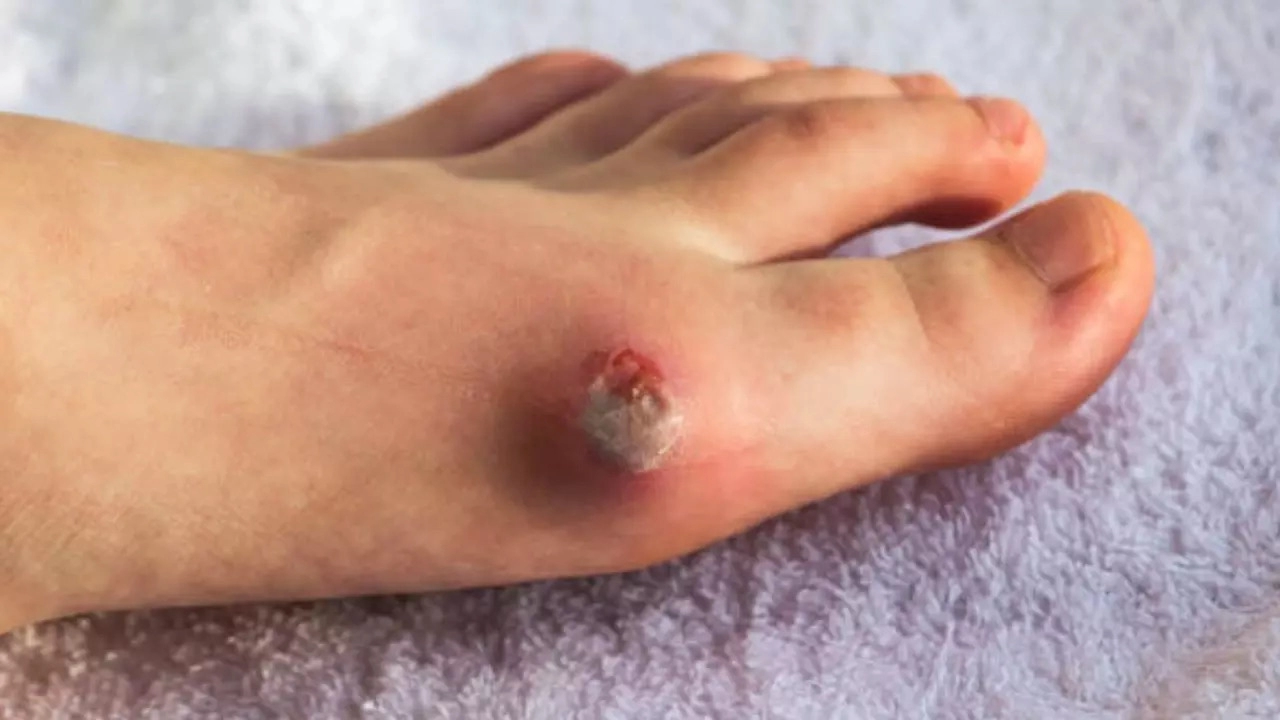
Why Diabetic Foot Ulcers Occur And How To Prevent Them: Expert Tips To Follow (Image Credits: iStock)
Diabetes is a complex condition that comes with a range of complications that can arise from prolonged, unmanaged blood sugar levels. One of the most serious complications is diabetic foot ulcers (DFUs), also known as Diabetic Foot Disease (DFD) or Diabetic Foot Syndrome (DFS). DFUs are open sores or wounds that develop primarily on the feet, often due to nerve damage or poor circulation caused by diabetes. If left untreated, these ulcers can become severely infected.
We got in touch with Dr N. Kaushik, a Diabetic Foot Surgeon from the Podiatry Department at Rajiv Gandhi Co-operative Multi-Specialty Hospital in Palakkad, Kerala who explains the causes, symptoms, prevention strategies, and treatment options that are critical for diabetic patients to prevent and manage this condition effectively.
Causes and Risk Factors of Diabetic Foot Ulcers
Dr N. Kaushik explains diabetic foot ulcers occur when the skin tissue on the feet breaks down, exposing the underlying tissue. This often happens in areas where the feet experience the most pressure, such as under the big toe or the heel. People with calluses on their feet may be more susceptible to developing ulcers in these areas.
While not all diabetic patients develop foot ulcers, those who do are often affected by several risk factors:
- Ill-fitting footwear: Wearing poorly constructed or improperly sized shoes can increase pressure and friction on the feet, leading to ulcers.
- Poor foot hygiene: Infrequent washing or improperly drying feet can contribute to skin breakdown and ulcers.
- Toenail issues: Improper trimming of toenails can cause small injuries that, in diabetics, may develop into ulcers.
- Reduced blood supply: Diabetics are at risk for poor circulation, especially in the lower limbs, which can impede healing.
- Obesity and smoking: Both can exacerbate circulation problems, delaying healing and increasing ulcer risk.
Who Is At Risk: Certain groups face a higher risk of developing foot ulcers, particularly older men with diabetes, who often have additional complicating health factors, Dr N. Kaushik shares.
Symptoms of Diabetic Foot Ulcers
Diabetic foot ulcers don’t always present obvious symptoms right away. They may go unnoticed until infection sets in. Dr Kaushik shares some common signs to watch for including:
- Drainage from the ulcer: This could stain socks or shoes and is one of the initial indicators.
- Swelling and redness: Any unusual swelling or warmth in the foot may indicate an underlying issue.
- Black tissue (eschar): This dark tissue around the ulcer is often a sign of poor blood supply, indicating that the ulcer could worsen without intervention.
- Odour and pain: In severe cases, ulcers may produce a foul-smelling discharge and become painful.
Causes: What Leads to Foot Ulcers?
Dr N. Kaushik explains foot ulcers in diabetics can arise from various factors:
1. Nerve damage: Over time, high blood sugar can cause nerve damage, leading to numbness or tingling in the feet. Reduced sensation means that minor injuries may go unnoticed and develop into ulcers.
2. Blood circulation problems: Poor blood flow can hinder the body’s natural ability to heal. For diabetics, this slows ulcer recovery and can lead to further complications.
3. High blood glucose levels: Elevated blood sugar impairs the healing process. Proper diabetes management is essential for ulcer prevention and treatment.
4. Foot deformities: Structural changes in the foot, such as bunions or calluses, can increase pressure on certain areas, making them prone to ulceration.
Diagnosis and Treatment Options
Foot ulcers require an overall medical evaluation, involving a physical examination by a health expert. Dr Kaushik notes that doctors often use the Wagner Ulcer Classification System to grade the severity of the ulcer on a scale from 0 to 5, which helps guide treatment. Diagnostic tests, including X-rays, may also be ordered to check for infection spread to the bones. Blood tests can reveal glucose levels and signs of infection.
Some common treatment options for diabetic foot ulcers include:
- Off-loading: Reducing pressure on the ulcerated area, often by avoiding prolonged standing or walking, can help the ulcer heal.
- Special footwear: Patients may be advised to wear supportive shoes, braces, or inserts to reduce friction and prevent ulcers from worsening.
- Debridement: This procedure involves removing dead tissue and any foreign objects in the ulcer to promote healing.
- Medications and dressings: Antibiotics may be prescribed if an infection is present, and dressings that promote a moist healing environment can accelerate recovery.
Potential Complications
Dr N. Kaushik shares that diabetic foot ulcers can lead to serious complications if left untreated. Common issues include:
- Abscess formation: Untreated ulcers can lead to localized collections of pus.
- Sepsis: If the infection spreads to the bloodstream, sepsis can occur, posing a life-threatening risk.
- Deformities and weakness: Long-term complications of unmanaged diabetes can weaken the muscles and bones in the foot, leading to non-healing ulcers and changes in foot structure.
- Gangrene: Severe cases can lead to tissue death, necessitating partial or complete amputation to prevent the infection from spreading.
Preventing Diabetic Foot Ulcers
Preventive measures are vital for diabetic patients to reduce their risk of foot ulcers. Dr Kaushik explains that over half of diabetic foot ulcers become infected, making prevention even more crucial. Some steps to consider include:
- Manage blood sugar: Consistently maintaining glucose levels within a healthy range is crucial.
- Daily foot care: Washing feet regularly, drying thoroughly (especially between toes), and moisturizing can prevent skin breakdown.
- Proper toenail care: Regularly trimming toenails or seeking professional help for foot care can reduce injury risk.
- Choose appropriate footwear: Wearing well-fitting, supportive shoes can prevent calluses and pressure points that lead to ulcers.
- Regular check-ups with a podiatrist: Routine visits can help manage calluses, corns, and other skin issues that may contribute to ulcer formation.
Get Latest News Live on Times Now along with Breaking News and Top Headlines from Health and around the world.

